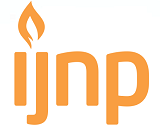Perangkat Kesiapsiagaan Bencana Untuk Wanita Hamil dan Pasca Melahirkan
DOI:
https://doi.org/10.18196/ijnp.2284Keywords:
Letusan gunung berapi, kehamilan, paska melahirkan, bencanaAbstract
Abstrak
Latar belakang: Letusan gunung berapi pada tahun 2010 meningkatkan kesadaran akan kebutuhan untuk mendidik populasi rentan dalam kesiapsiagaan bencana. Wanita dan bayinya terutama berisiko terkena bahaya karena bencana alam. Penelitian saat ini menunjukkan bahwa populasi rentan biasanya kurang siap untuk kejadian bencana besar.
Tujuan: Tujuan dari penelitian ini adalah untuk mengetahui efektivitas dari intervensi pendidikan singkat yang ditujukan untuk meningkatkan tingkat kesiapsiagaan bencana dari wanita hamil dan pasca melahirkan.
Metode: 30 wanita hamil dan pasca melahirkan dibagi menjadi kelompok intervensi dan kelompok kontrol. Pretest diukur dengan menggunakan instrumen kesiapan keluarga, dan post-test dilakukan pada 30 hari paska-intervensi. Skor dinilai berdasarkan jumlah item yang berhasil diselesaikan pada instrumen kesiapsiagaan.
Hasil: Perbedaan signifikan ditemukan pada skor pretest dan posttest pada keluarga yang menerima intervensi (p = 0,000). Skor posttest secara signifikan lebih tinggi daripada skor pretest, menunjukkan bahwa intervensi berhasil meningkatkan tingkat kesiapan keluarga untuk menghadapi bencana jangka pendek secara keseluruhan pada populasi ini.
Kata kunci: Letusan gunung berapi, kehamilan, paska melahirkan, bencana
Abstract
Background: Volcanic eruption in 2010 heightened awareness of the need to educate vulnerable populations on disaster preparedness. Women and their infants are notably at risk for harm due to natural disasters. Current research suggests that the vulnerable populations usually less prepared for a major disaster event.
Objective: The purpose of this study was to determine the short-term effectiveness of a brief education intervention aimed at increasing levels of disaster preparedness of the pregnant and post-partum women.
Method: 30 pregnant and postpartum women assigned to control and intervention group Families were surveyed prior to the intervention using instrument on family preparedness, and at 30 days post-intervention. A Preparedness Score was assigned to each family based on the number of items completed on the preparedness instrument.
Result: Significant differences were found between pre- and posttest scores for families that received the intervention (p= 0.000). Posttest scores were significantly higher than pretest scores, suggesting that the intervention was successful in increasing short-term overall levels of family disaster preparedness in this population.
Keywords: Volcanic eruption, pregnant, post-partum, disaster
References
American Congress of Obstetricians and Gynecologists (ACOG). (2010). Preparing for disasters: Perspectives on women. Obstetrics & Gynecology, 115(6), 1339-1342.
American Red Cross. (n.d.) Prepare for disasters before they strike: Build a disaster supply kit. Retrieved from
Association of Women’s Health Obstetrics and Neonatal Nurses (AWHONN). (2012). The role of the nurse in emergency preparedness. Nursing for Women's Health, 16(2), 170-172. doi:10.1111/j.1751-486X.2012.01726.x
Blackwood, B., Albarran, J. W., & Latour, J. M. (2011). Research priorities of adult intensive care nurses in 20 European countries: A Delphi study. Journal of Advanced Nursing, 67(3), 550-562. doi:10.1111/j.1365-2648.2010.05512.x
Comrey, A. L., & Lee, H. B. (2013). A first course in factor analysis. Hoboken: NJ:Taylor & Francis. Department of Homeland Security. (n.d.). Plan and prepare for disasters. Retrieved from http://www.dhs.gov/topic/plan-and-prepare-disasters
DeWald, L., & Fountain, L. (2006). Ask an expert. Introducing emergency preparedness in childbirth education classes. Journal of Perinatal Education, 15(1), 49-51.
Emergency preparedness for childbirth. (2011). Journal of Midwifery & Women’s Health, 56(2), 185-186. doi:10.1111/j.1542-2011.2010.00020.x
Ewing, B., Buchholtz, S., & Rotanz, R. (2008). Assisting pregnant women to prepare for disaster. MCN: The American Journal of Maternal Child Nursing, 33(2), 98-103.
Federal Emergency Management Agency (FEMA). (2008). National response
framework. Retrieved from http://www.fema.gov/pdf/emergency/nrf/nrf-core.pdf
Downloads
Published
Issue
Section
License
License
Articles published in the IJNP (Indonesian Journal of Nursing Practices) are licensed under a Attribution 4.0 International (CC BY 4.0) license. You are free to:
- Share — copy and redistribute the material in any medium or format.
- Adapt — remix, transform, and build upon the material for any purpose, even commercially.
This license is acceptable for Free Cultural Works. The licensor cannot revoke these freedoms as long as you follow the license terms. Under the following terms:
Attribution — You must give appropriate credit, provide a link to the license, and indicate if changes were made. You may do so in any reasonable manner, but not in any way that suggests the licensor endorses you or your use.
- No additional restrictions — You may not apply legal terms or technological measures that legally restrict others from doing anything the license permits.
Copyright
Authors who publish with IJNP (Indonesian Journal of Nursing Practices) agree to the following terms:
- Authors retain copyright and grant IJNP (Indonesian Journal of Nursing Practices) the right of first publication with the work simultaneously licensed under an Attribution 4.0 International (CC BY 4.0) that allows others to remix, adapt and build upon the work with an acknowledgment of the work's authorship and of the initial publication in IJNP (Indonesian Journal of Nursing Practices).
- Authors are permitted to copy and redistribute the journal's published version of the work (e.g., post it to an institutional repository or publish it in a book), with an acknowledgment of its initial publication in IJNP (Indonesian Journal of Nursing Practices).














